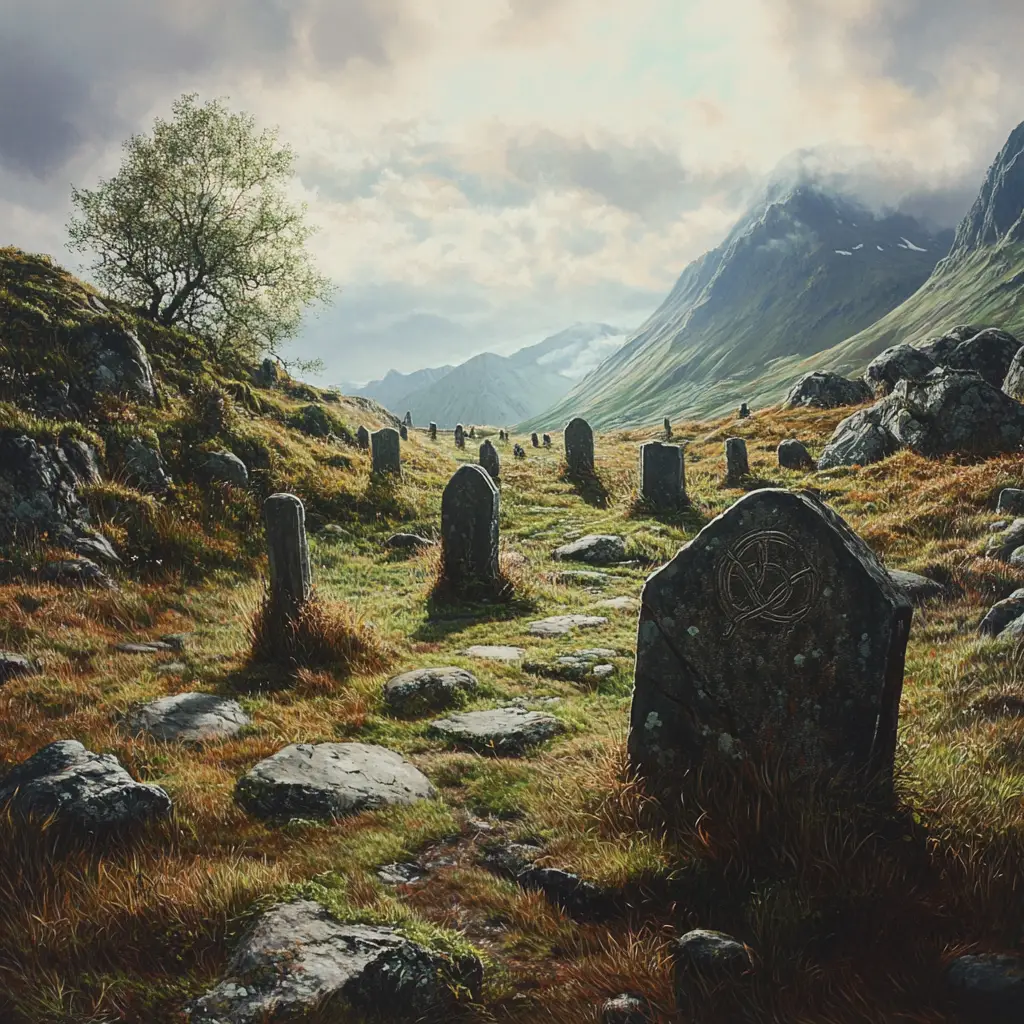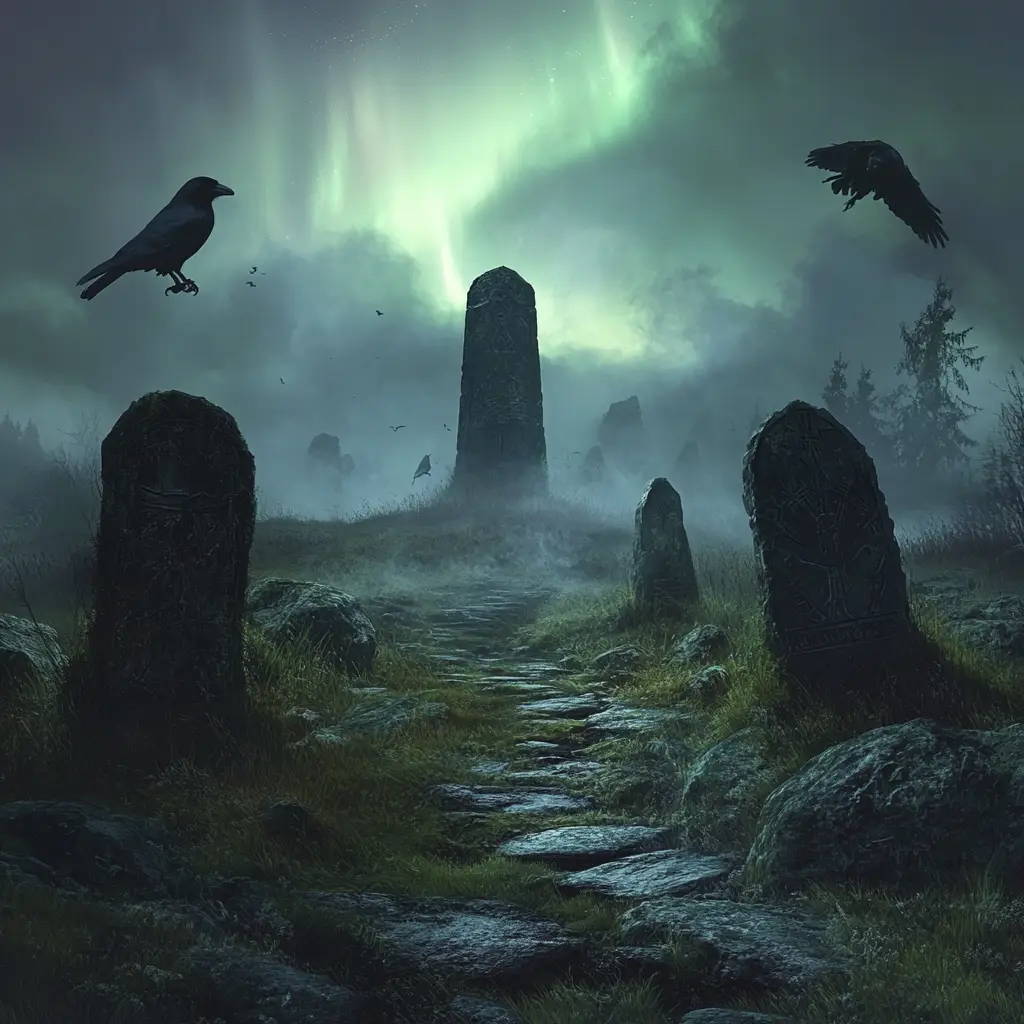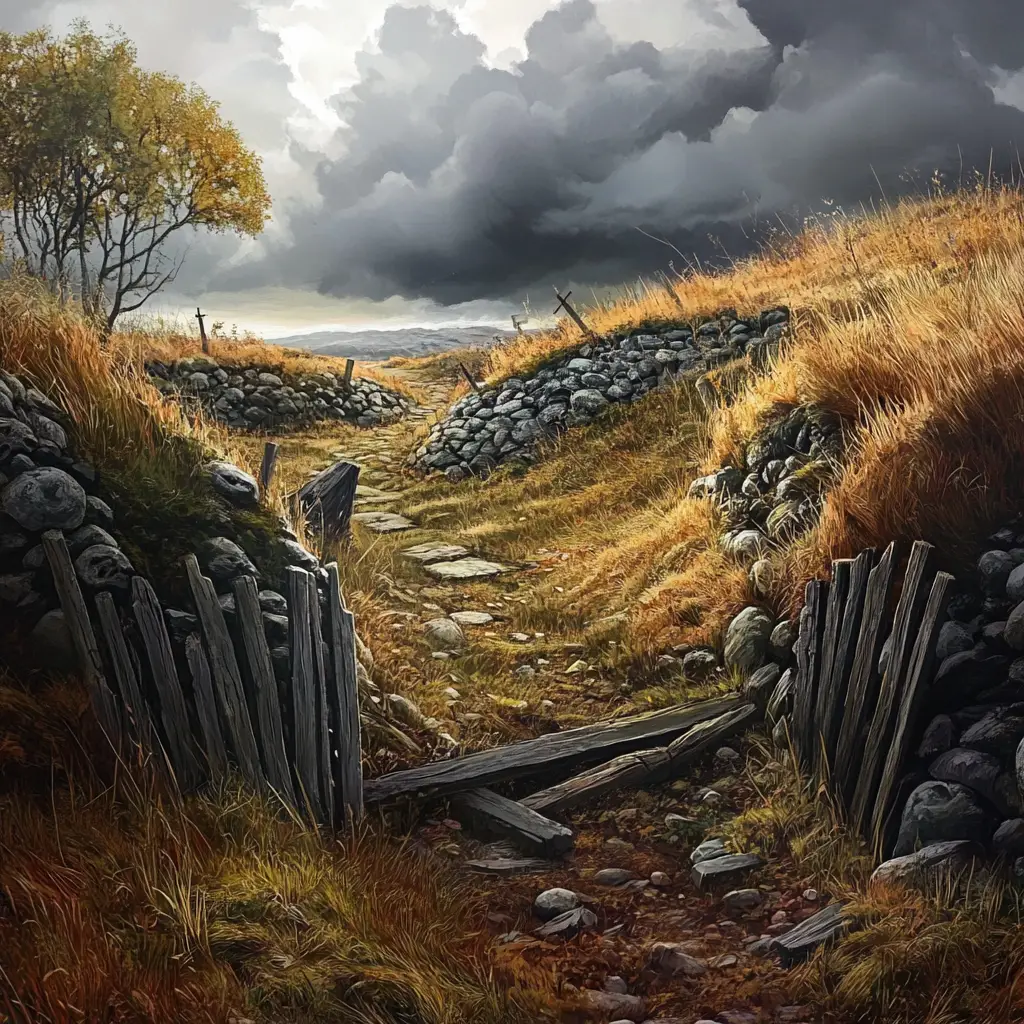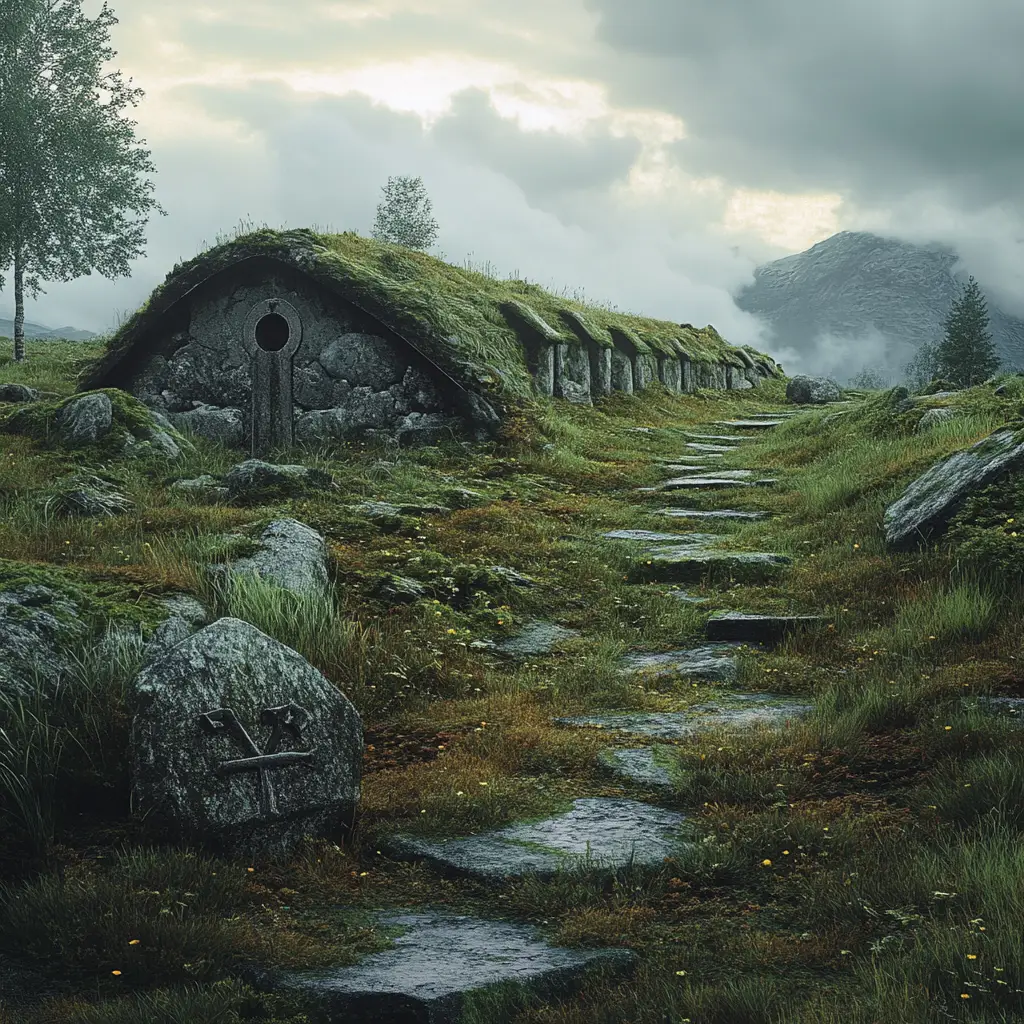Resting Places of Norse Warriors and Nobles
Viking burial grounds are some of the most fascinating archaeological sites, revealing much about Norse beliefs, traditions, and social hierarchy. Vikings believed in an afterlife, and burial practices varied based on status, wealth, and local customs.
Types of Viking Burials
Ship Burials (for Nobles and Chieftains)
The most prestigious Viking burial involved placing the deceased in a longship, which was either buried or burned on a funeral pyre.
Weapons, armour, gold, and even sacrificed animals or thralls (servants/slaves) were buried alongside them.
Famous ship burials include the Oseberg Ship Burial (Norway) and the Gokstad Ship Burial.
Mound Burials (for Kings and Warriors)
Some Viking leaders were buried under massive earth mounds, marking their resting place for generations.
These burial mounds often contained chambers filled with personal items, treasures, and weapons.
Example: The Jelling Mounds (Denmark), believed to be the burial site of King Gorm the Old.
Simple Burials and Cremations (for Commoners)
Not all Vikings had grand funerals. Many were buried in simple graves or cremated, as fire was believed to help the soul reach the afterlife.
Some graves contained grave goods, such as tools, weapons, and food, to help the deceased in the afterlife.
Viking Beliefs About Death and the Afterlife
Valhalla – The great hall of Odin, where warriors who died in battle feast until Ragnarok.
Fólkvangr – A peaceful afterlife ruled by the goddess Freyja, where some warriors also went.
Hel – Not all Vikings went to Valhalla; those who died of sickness or old age might go to Helheim, a cold, shadowy realm ruled by Hel, Loki’s daughter.



